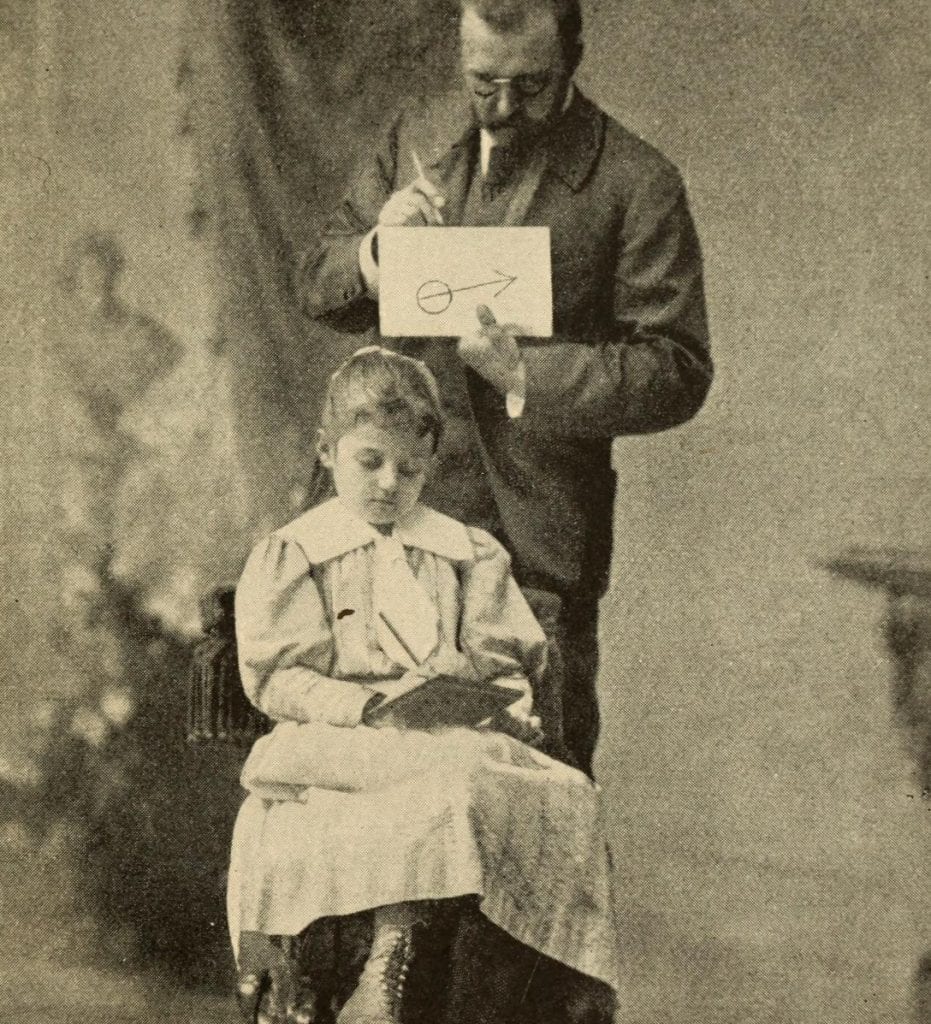
In his memoir On Writing, Stephen King offers this succinct description of what writing is: “Telepathy, of course.”
Then he tells a story.
Look — here’s a table covered with a red cloth. On it is a cage the size of a small fish aquarium. In the cage is a white rabbit with a pink nose and pink-rimmed eyes. In its front paws is a carrot-stub upon which it is contentedly munching. On its back, clearly marked in blue ink, is the numeral 8.
Do we see the same thing? We’d have to get together and compare notes to make absolutely sure, but I think we do . . .
The most interesting thing here isn’t . . . the carrot-munching rabbit in the cage, but the number on its back. Not a six, not a four, not nineteen-point-five. It’s an eight. This is what we’re looking at, and we all see it. I didn’t tell you. You didn’t ask me. I never opened my mouth and you never opened yours. We’re not even in the same year together, let alone the same room . . . except we are together. We’re close.
We’re having a meeting of the minds.
As a scientist, I’m don’t feel qualified to comment on the sixth sense, and I’m in no position to argue writing with Stephen King, but I believe he would allow that, by this definition of telepathy, theater or music or painting or really any kind of artistic expression also represents a “meeting of the minds.” Whether convened in close quarters or over large, even improbable, spatial and temporal distance, art brings people together and negotiates between them an exchange of ideas.
But wait. Doesn’t this portrayal apply as well to all forms of effective communication?
*
I’ve been mulling over the nature of communication since our Faculty Learning Community met earlier this month. Communication and community. These words both stem from the Latin communis (I Googled it) for “common,” for something shared. And what is often (always?) shared in effective communications and communities are ideas. In our community, our FLC, we share ideas about teaching and innovation: how to better reach our students, engage them, help them develop as scholars and citizens and disciplinary experts.
Typically, what we’ve talked about when we talk about learning in our FLC has been guided by the book Courageous Edventures, a perky travelogue that “charts a course to classroom innovation,” with the author’s anecdotes, observations, and blurbs about nifty educational technologies as waypoints. However, in our most recent FLC meeting, we took a detour from the Edventures and swung through several of our own group members’ teaching projects.
Some sights we saw:
- overturned classrooms, with the pedagogical furniture updated and rearranged to enhance the functionality of the learning space;
- scaffolding constructed to bridge gaps in comprehension and help students climb to greater heights in their learning;
- meta-assignments that offer greater freedom and urge greater responsibility as they guide students toward guiding their own learning—and toward a recognition that, in the educational setting, process can be as important as product.
In this community, discussing another instructor’s challenges often highlights issues in my own courses. When our group formulates solutions to one particular problem, I begin tinkering with and applying the approaches to others. When we counsel and encourage one another, I find myself fortified and inspired.
So, as Jenifer and Mike introduced their recorded lectures and screencasted answer keys, I considered how, with a few more narrated PowerPoints in Canvas, I could rebalance my classes and claim a bit more face-to-face time for discussion and problem solving. When Catherine and Mary Ann talked about interrupting a Kaltura video with a pause for reflection in order to help students better focus on and process material to which they’d just been exposed—a simple, but sturdy scaffold—I thought about how I could employ that same strategy even in a traditional lecture. And the enthusiasm and input I received from the group for my idea (born in part from earlier FLC discussions) of a student-directed assignment embolden me to refine my plan and enact it.
That’s what the FLC has meant for me so far. In this community, we share ideas. We think out and communicate better ways to communicate with our students. We are making connections with one another—and inside, too; we learn in this FLC. (As we sit around the table and the Zoom camera, the molecular biologist in me envisions the electricity arcing across neural networks, the nanoscale explosions of synpatic chemical signals: an uproarious gray matter meetup.)
*
Perhaps when Stephen King compared writing to telepathy, he wasn’t so much implying the extrasensory nature of the experience, but rather emphasizing the mystical quality of the written word, the wizardry we participate in as we read—as we, if not literally then literarily, behold the rabbit that the writer pulls from the cage (or the page).
We should all strive for such abracadabra when we write, when we talk, when we teach.
Teaching is a science, and teaching is an art. Teaching is communication. It might not be telepathy, exactly, but there’s magic in it, and in this Faculty Learning Community, too, this meeting of minds.
All I can say, Brian, is Wow! You are truly an inspiration – a scientist with all the creativity and literary talent of a fine arts professional.
Jenifer: That’s really kind of you (blush). I hope it came across that you all inspire me! 😊